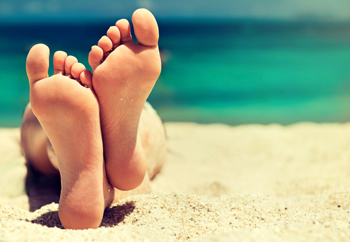Effects of Flat Feet Versus High Arches
Tuesday, 23 August 2022 00:00
Most people do not think too much about what type of foot they have. But it has been found that different foot types can be the source of a number of chronic foot maladies. Foot types range from flat feet to high arches, and anywhere in between. With flat feet, the sole of the foot is flush with the floor when bearing weight. With high arches, the midfoot is stiff and only the toe, heel and outside of the foot touch the ground when standing. People with flat feet often develop inflammation of the tendon on the inside of the ankle, termed posterior tibial tendonitis. People with high arches tend to develop inflammation of the tendon on the outside of the ankle, termed peroneal tendonitis. These conditions occur because of the way the foot absorbs the force produced with every step you take. Other conditions common to those with flat feet include tarsal tunnel syndrome and stress fractures of the 2nd metatarsal. Those with high arches may be more susceptible to ankle instability and sprains, stress fractures of the 5th metatarsal, and sesamoiditis. Both foot types may result in plantar fasciitis. To find out more about your foot type, especially if you are in pain, please consult a podiatrist for an examination and suggestions for treatment.
If you have any concerns about your feet, contact one of our podiatrists from Ankle & Foot Care Center. Our doctors can provide the care you need to keep you pain-free and on your feet.
Biomechanics in Podiatry
Podiatric biomechanics is a particular sector of specialty podiatry with licensed practitioners who are trained to diagnose and treat conditions affecting the foot, ankle and lower leg. Biomechanics deals with the forces that act against the body, causing an interference with the biological structures. It focuses on the movement of the ankle, the foot and the forces that interact with them.
A History of Biomechanics
- Biomechanics dates back to the BC era in Egypt where evidence of professional foot care has been recorded.
- In 1974, biomechanics gained a higher profile from the studies of Merton Root, who claimed that by changing or controlling the forces between the ankle and the foot, corrections or conditions could be implemented to gain strength and coordination in the area.
Modern technological improvements are based on past theories and therapeutic processes that provide a better understanding of podiatric concepts for biomechanics. Computers can provide accurate information about the forces and patterns of the feet and lower legs.
Understanding biomechanics of the feet can help improve and eliminate pain, stopping further stress to the foot.
If you have any questions please feel free to contact our office located in Jupiter, FL . We offer the newest diagnostic and treatment technologies for all your foot and ankle needs.



